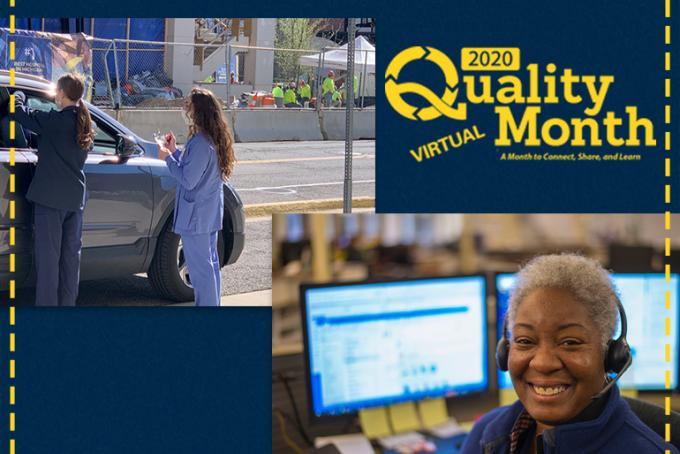
The COVID-19 pandemic created many challenges — particularly for health care organizations like Michigan Medicine — as faculty and staff had to balance providing world-class patient care with keeping their colleagues and themselves safe.
Transitioning to a remote working platform also created unique circumstances as departments across the organization shifted staff to off-site locations.
But none of that stopped teams from carrying out the organization’s mission of advancing health to serve Michigan and the world.
As the pandemic spread, Michigan Medicine quickly shifted to a remote working model for many faculty, staff and learners. This transition impacted every department across the organization, most notably Health Information Technology & Services (HITS).
“Shifting to a remote work environment is not as simple as taking your computer to a new location and turning it on,” said Michael Warden, senior director of HITS Business IT. “While our hope is always to make things seamless for our customers, there is a lot of work that needs to be done on the back-end to ensure we can handle thousands of remote workers.”
In the first week of COVID, calls and tickets to the HITS service desk increased dramatically, resulting in a 159 percent increase in the average speed to answer, negatively impacting patient care and employee productivity. The HITS team quickly got to work on implementing enhancements to reduce wait time and improve the customer experience.
“As a team we realized that COVID-19 created a situation that would strain our existing systems and resources in ways we had never experienced before,” said Warden. “As part of our root cause analysis, we identified trends to better understand what questions were high-volume drivers.”
Based on this analysis, the team updated the internal “remote work from home” troubleshooting documentation, expanded external self-help resources and a “tech guide to working remotely,” enacted a new remote work from home phone tree prompt, proactively monitored calls that had over a 30-minute “handle time,” and implemented a virtual chat agent to automatically support remote work from home topics.
“Thanks to the hard work of our team, these interventions resulted in a transformed service desk experience,” Warden said.
In fact, in a matter of weeks, the abandonment rate of calls hit record lows, the critical clinical calls were answered on average in 20 seconds, all other lines in about 40 seconds, and the team reduced call handle time by 67 percent.
“Perhaps most importantly, our customer satisfaction ratings hit record high levels,” Warden explained. “Even now, when the majority of our workforce has completed the transition to remote work, we are still experiencing higher than normal call volumes so we are continuing to add additional supporting metrics and countermeasures to ensure we are meeting needs and expectations.”
The team plans to continue reducing call volumes by evaluating high-volume topics and updating materials to further improve service design and knowledge.
